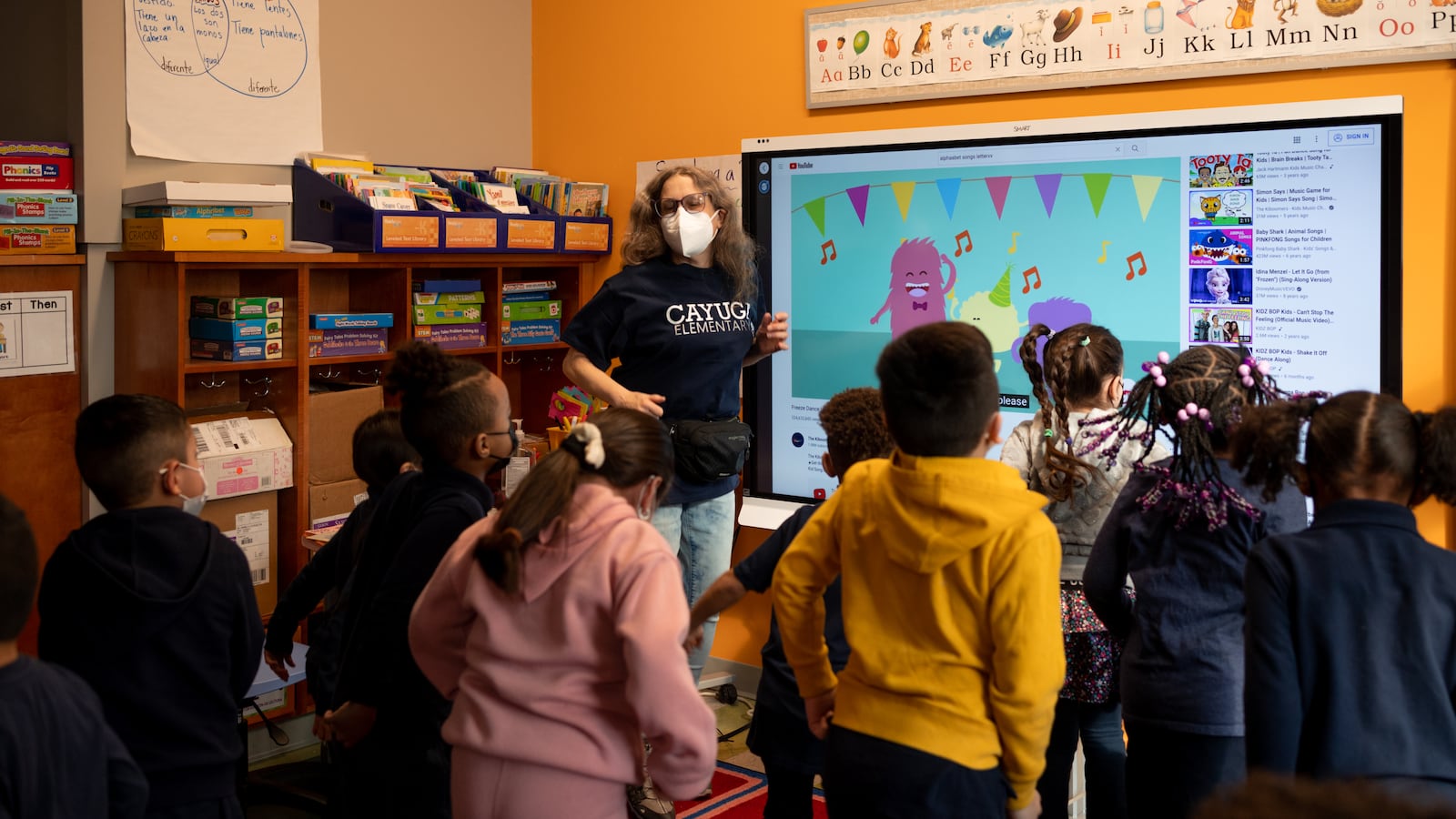Nearly two years into the pandemic, COVID often blends into the background at Cayuga Elementary School in North Philadelphia. In Ruth Llorens’ kindergarten classroom, 20 kids chatter about pets and birthdays, read books like “Sneezy the Snowman,” and follow along when she reviews how to write a lower-case Z.
Other times, COVID is painfully obvious. In January, a little boy told Llorens he missed his uncle, who’d died from the virus over winter break.
“I just kind of listened to him more than anything else,” she said. “Really, he just wanted to talk about his uncle and what they used to do.”
Such is the year so far. Routine classroom moments are punctuated by reminders of COVID’s fallout, ranging from sadness and fatigue to the recognition that some students missed out on lots of learning over the past two years. That includes academics, of course, but also classroom routines. Principal Jason Carrion said after many months of sitting face-forward in carefully spaced rows, students are relearning the art of sitting together in pods and working in groups.
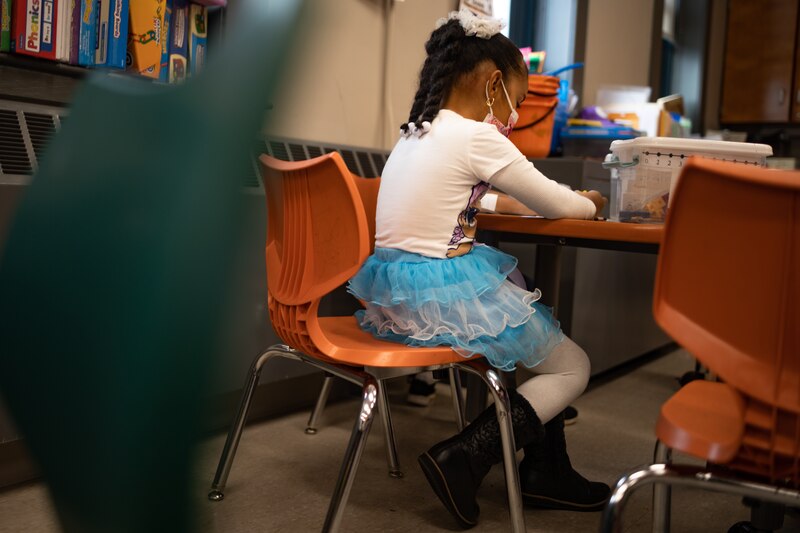
Cayuga serves 361 students, about three-quarters of them Latino, in a three-story brown brick building in the Hunting Park neighborhood. All students are eligible for free or reduced-price school meals.
Carrion, a former high school math teacher who leads a staff of more than 60, said Cayuga’s teachers have been operating at a “heightened level,” this year, whether coping with pandemic stress or managing the trauma that students bring into the classroom.
”Children have lost loved ones and family members. It’s been not only COVID but it’s been gun violence,” he said. “With all that, teachers come in and give their all.”
Like schools nationwide, Cayuga has struggled to find subs to cover staff absences this year. Carrion often leads classrooms for half an hour here or 45 minutes there, or helps out in the cafeteria. Some students call him Mr. C. or Mr. Principal. A few think he’s the school counselor.
Once this year, Carrion led a first grade class all day.
“I was exhausted at the end of the day, but it was great,” he said. “We have to do it for the team.”
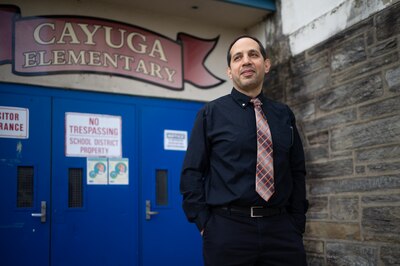
Carrion said kindergarteners are meeting key academic targets this year, and generally upper elementary students are, too. But many first- and second-graders are struggling. They didn’t get enough exposure to foundational skills or classroom norms last year during virtual and hybrid learning, he said.
Glynnis Gradwell, a retired classroom teacher who works with small groups of struggling second and third grade readers and helps with one kindergarten class, said, missing out on face-to-face learning in kindergarten and first grade set kids back.
“Even if they had the online academics, they did not have that piece, that we’re getting along, we’re cooperating, we’re listening, we’re a group,” she said.
There were other kinds of gaps.
“Teachers couldn’t reach through the screen and show them how to hold a pencil,” she said.
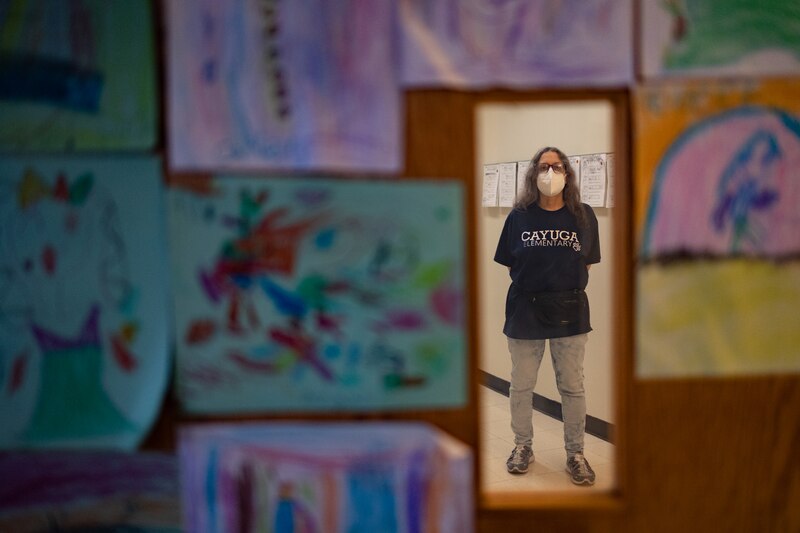
But Gradwell, whose groups of four allow her to give children lots of personal attention and “get as many books in their hands as possible,” has seen bright spots, too.
During one reading group as the students tackled a fourth story, a boy exclaimed, “Oh, this is fun,” she recalled. “Like he was suddenly surprised it was fun.”
Another time, a student noticed a boy’s emotional struggle before she did and spoke up for him. Gradwell wanted the boy to pull his hood down so he’d be sure to hear the lesson, but he stubbornly refused. Eventually, the classmate explained: “He got a new haircut and he doesn’t want anyone to comment.”
Gradwell waited two weeks before returning in-person to Cayuga in January.
“I promised my husband, who’s older, and we also have a disabled son, that I would not bring COVID back,” she said. “But I haven’t and I feel very safe here.”
Llorens said other than a districtwide week of virtual learning at the beginning of January, her kindergarten class has been in-person this winter and most students are exactly where they should be at this point in the year. Since the holiday break, she’s seen them become more adept at working in pairs, whereas previously they defaulted to working individually.
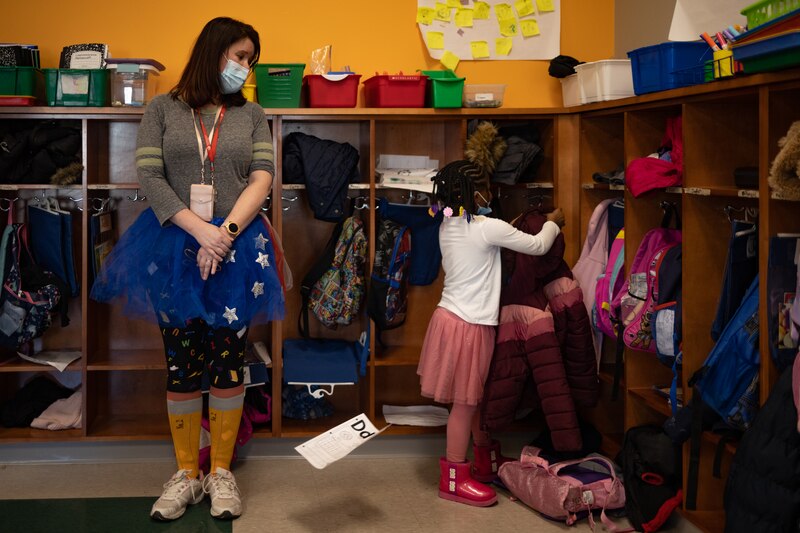
“Sometimes you’ve got to explain that trying to help somebody is not doing the work for them,” she said, adding that it’s nice to see them helping each other complete a task.
Llorens, who de-stresses after a long day by exercising or playing the video game Halo, said for many of her students, the pandemic has been part of life since they can remember and is now mostly “background noise.”
“I might hear every now and then, someone is sick in a house and I [say] ‘I’m sorry, I hope they feel better,’ and then they’re off on another topic,” she said.
Ann Schimke is a senior reporter at Chalkbeat, covering early childhood issues and early literacy. Contact Ann at aschimke@chalkbeat.org.


